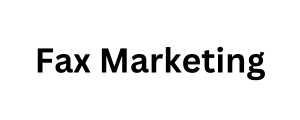In the ever-evolving landscape of digital communication, email remains a stalwart channel for businesses and individuals alike. However, with the convenience of email comes the challenge of navigating spam filters, designed to protect users from the deluge of unsolicited and potentially harmful messages. One critical factor that significantly impacts email deliverability and, consequently, the effectiveness of email marketing campaigns is the frequency at which emails are sent. Email frequency refers to how often an organization or individual sends out emails to their subscribers. Striking the right balance in email frequency is essential for maintaining a positive sender reputation and ensuring that your messages land in the recipient’s inbox rather than being consigned to the dreaded spam folder. Spam filters employ intricate algorithms that evaluate various aspects of an email to determine its legitimacy.
These algorithms consider factors such as sender reputation email content
Engagement, and, indeed, email frequency. Here’s how email frequency influences your emails’ fate in the intricate web of spam filters: 1. Sender Reputation: Email providers assess the reputation of the sending domain and IP address. Consistently sending Remove Background Image emails at a reasonable frequency helps build a positive sender reputation. Abrupt spikes in email volume, resulting from excessive frequency, can raise suspicions and trigger spam filters. 2. Engagement Metrics: Email engagement metrics, including open rates and click-through rates, play a pivotal role in spam filter decisions. When subscribers frequently engage positively with your emails, it signals to spam filters that your messages are desirable and legitimate. Sending too many emails within a short time span can lead to subscriber fatigue, diminishing engagement rates and potentially raising red flags for spam filters. 3. User Complaints: High email frequency increases the likelihood of recipients marking your messages as spam due to irritation or disinterest.
A surge in user complaints is a strong signal to spam filters that your
Emails might not be genuine. This can severely damage your sender reputation and result in future emails being diverted to spam folders. 4. Content Relevance: Email content should always be relevant and valuable to recipients. Maintaining an optimal email frequency ensures that each Fax Marketing message carries meaningful content rather than repetitive or irrelevant information. Overloading recipients with frequent emails risks diluting the quality of your content and increasing the chances of being marked as spam. 5. Unsubscribe Rates: Frequent emails without significant value can lead to higher unsubscribe rates. Subscribers opting out of your emails isn’t just a loss in potential leads; it’s also a negative indicator to spam filters. An increase in unsubscribes due to excessive frequency can impact your sender reputation and, subsequently, deliverability. In conclusion, the role of email frequency in avoiding spam filters is paramount.







